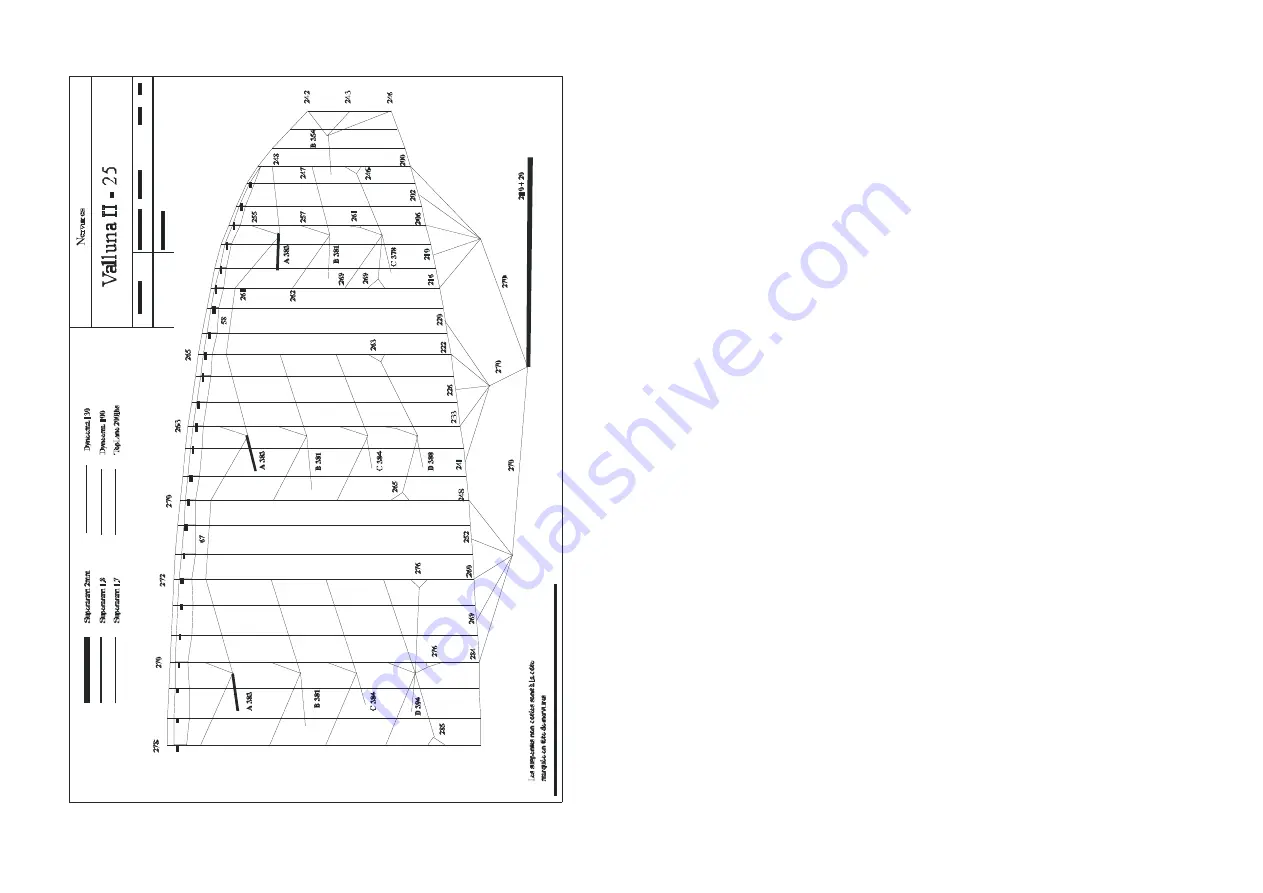
8
13
Please attach also a note giving your name and adress, the reason for
returning the wing and the areas to be repaired (by marking the area with
coloured tape). As a matter of fact, an important part of the repair time is
wasted by having to search for the damage. Please return the wing folded like
an accordion.
INFLATION AND TAKE-OFF
The most suitable way of laying out a wing is in an arc, which enables
the paraglider to fill up evenly, starting from the centre.
It is essential to assure that every row of suspension lines is free of tangles and
knots and that no line goes around the wing tip. In fact, any defect in the sail
during the phase of take-off can have unpredictable effects on the trajectory.
The direction of the take-off, from the wing centre should be into the wind
starting with taut lines and no jerk, leaning forwards for a progressive pull.
he pilot will limit the movements of his hands to simply accompanying the
rising wing with front risers applying light traction. Too strong a traction can
partly close the leading edge intakes.
In moderate winds (from 10 mph), in order to avoid a brutal take-off, it is re-
commended to use a back to wind technique, by going to the canopy during
the raise to slow down the take off..
RAPID DESCENT TECHNIQUES
In a 360° spiral, a sink rate of more than 10 m/s / 30 ft/s is attained. This
manoeuvre can disorientate the pilot (loss of reference point and strong accele-
ration). One should learn this technique progressively. In particular one should
avoid the symmetrical mid braking position for coming out of the spiral. This is
best obtained by raising both hands progressively.
The "B"-line stall is easy . After a slight swinging, this will produce a vertical
descent rate of about 8 m/s. There is a risk of entering a front horse shoe
configuration. To get out of it the pilot will slowly release the B branch and pull
symetricalIy and briefly the brakes. The return to flight will cause a moderate
surge which should be controlled on the brakes. Avoid a sudden release of the
B risers.
Big ears are obtained by pulling on the external A line. Pulling on this line must
be done progressively to avoid too big a closure. Once the big ears are in, the
pilot can increase progressively their size by pulling more and more length on
the line. One should make sure that the central half of the wing is kept open.
A simultaneous use of the accelerator will avoid the risk of deep stall phasis. To
re-open big ears The pilot will pull symetrically and briefly on the brakes, being
carefull not to slow down the wing.


























